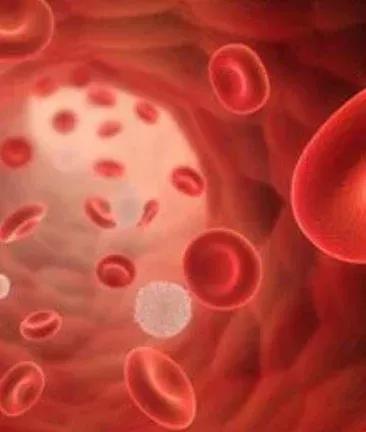Article
Rylaze sBLA Seeking Approval of New Dosing Schedule in ALL and Lymphoblastic Lymphoma Submitted to FDA
Author(s):
The submission of a supplemental biologics license application seeking the approval of a Monday/Wednesday/Friday intramuscular dosing schedule for asparaginase erwinia chrysanthemi-rywn for use as a component of a multiagent chemotherapy regimen in patients with acute lymphoblastic leukemia and lymphoblastic lymphoma who have developed hypersensitivity to Escherichia coli–derived asparaginase has been submitted to the FDA.

The submission of a supplemental biologics license application seeking the approval of a Monday/Wednesday/Friday (M/W/F) intramuscular dosing schedule for asparaginase erwinia chrysanthemi (recombinant)-rywn (Rylaze; JZP458) for use as a component of a multiagent chemotherapy regimen in patients with acute lymphoblastic leukemia (ALL) and lymphoblastic lymphoma (LBL) who have developed hypersensitivity to Escherichia coli (E. coli)–derived asparaginase has been submitted to the FDA.1
The application is supported by findings from a phase 2/3 trial (NCT04145531), which evaluated the following 3 dosing regimens with the product: 25 mg/m2 given on M/W/F (cohort 1a), 37.5 mg/m2 on M/W/F (cohort 1b), and 25 mg/m2 on Monday and Wednesday and 50 mg/m2 on Friday (cohort 1c).
Initial data indicated that the dosing regimen utilized in cohort 1c had a positive risk-benefit profile, with the product noted to have maintained a clinically meaningful level of nadir serum asparaginase activity (NSAA) of at least 0.1 IU/mL at both 48 and 72 hours from Friday to Monday. Moreover, the toxicity profile of the agent proved to be consistent with what has been observed with asparaginase with combination chemotherapy in this population.
“We were pleased Rylaze, a much-needed therapeutic option, was approved under the Real-Time Oncology Review program while the clinical trial was ongoing. Our science-led and patient-focused development program has enabled us to deliver a clinically significant advancement for patients,” Rob Iannone, MD, MSCE, executive vice president and global head of research and development of Jazz Pharmaceuticals, added in the press release. “With a dosing schedule of Rylaze administered 25/25/50 mg/m2 on M/W/F, patients maintain a clinically meaningful level of NSAA through the entire duration of treatment.”
The primary efficacy end points of the phase 2/3 trial are the proportion of patients with a last 72-hour (from Friday to Monday) NSAA levels of 0.1 IU/mL or higher during the first course of treatment, as well as safety and tolerability of the product in patients with ALL and LBL.2 A key secondary end point is the proportion of patients achieving the last 48-hour
Data from the initial analyses of the trial were presented during the 2021 ASH Annual Meeting and showed that the percentage of patients with observed NSAA levels of at least 0.1 IU/mL during course 1 at 48 hours was 97% (95% CI, 91%-100%) in cohort 1a, 98% (95% CI, 95%-100%) in cohort 1b, and 96% (95% CI, 90%-100%) in cohort 1c; at 72 hours, these percentages were 66% (95% CI, 48%-83%), 80% (95% CI, 70%-91%), and 90% (95% CI, 81%-98%), respectively.3
Based on a preliminary population pharmacokinetic modeling and simulation analysis vs observed data for cohort 1c, the proportion of patients predicted to achieve NSAA levels of 0.1 IU/mL or higher at 48 hours was 96% (95% CI, 90%-100%) vs 93% (95% CI, 92%-94%), respectively; at 72 hours, these percentages were 90% (95% CI, 81%-98%) and 91% (95% CI, 90%-92%), respectively.
Moreover, the mean serum asparaginase activity (SAA) levels were also identified. The mean SAA level in cohort 1a at 48 hours was 0.45 IU/mL (95% CI, 0.37-0.53), 0.84 IU/mL (95% CI, 0.68-0.99) in cohort 1b, and 0.66 IU/mL (95% CI, 0.54-0.77) in cohort 1c. At 72 hours, the mean SAA levels in cohorts 1a, 1b, and 1c were 0.15 IU/mL (95% CI, 0.12-0.19), 0.30 IU/mL (95% CI, 0.23-0.37), and 0.46 UI/mL (95% CI, 0.34-0.58), respectively.
Regarding safety, 57% of patients experienced treatment-emergent adverse effects (TEAEs), although none of these effects resulted in death.
The most common non-hematologic TEAEs comprised vomiting, nausea, fatigue, decreased appetite, pyrexia, abdominal pain, alanine aminotransferase increased, febrile neutropenia, back pain, headache, sinus tachycardia, stomatitis, pain in extremity, aspartate aminotransferase increased, and hyperglycemia.
Four percent of patients experienced TEAEs that resulted in treatment discontinuation.
Further study analyses are ongoing, and full results will be shared at a later date.
In June 2021, the FDA approved Rylaze as part of a chemotherapy regimen to treat pediatric and adult patients with ALL and LBL who are allergic to E. coli-derived asparaginase products.4 The regulatory decision was supported by findings from 102 patients who received Rylaze at a recommended dosage of 25 mg/m2 intramuscularly every 48 hours. The product provided the target level of asparaginase activity in 94% of patients.
References
- Jazz Pharmaceuticals completes US FDA supplemental biologics license application for Rylaze (asparaginase erwinia chrysanthemi [recombinant]-rywn) Monday/Wednesday/Friday dosing schedule. News release. Jazz Pharmaceuticals plc; February 2, 2022. Accessed February 2, 2022. https://yhoo.it/34hupF4
- Maese L, Loh ML, Lin T, et al. Initial results from a phase 2/3 study of recombinant Erwinia asparaginase (JZP458) in patients with acute lymphoblastic leukemia (ALL)/lymphoblastic lymphoma (LBL) who are allergic/hypersensitive to E. coli-derived asparaginases. Blood. 2021;138(suppl 1):2307. doi:10.1182/blood-2021-147023
- Jazz Pharmaceuticals presents positive interim phase 2/3 results of Rylaze (asparaginase erwinia chrysanthemi (recombinant)-rywn) in acute lymphoblastic leukemia or lymphoblastic lymphoma at ASH 2021 Annual Meeting. News release. Jazz Pharmaceuticals plc; December 12, 2021. Accessed February 2, 2022. https://bit.ly/3L5k004
- FDA approves component of treatment regimen for most common childhood cancer. News release. FDA. June 30, 2021. Accessed February 2, 2022. https://prn.to/3xe7rbi









